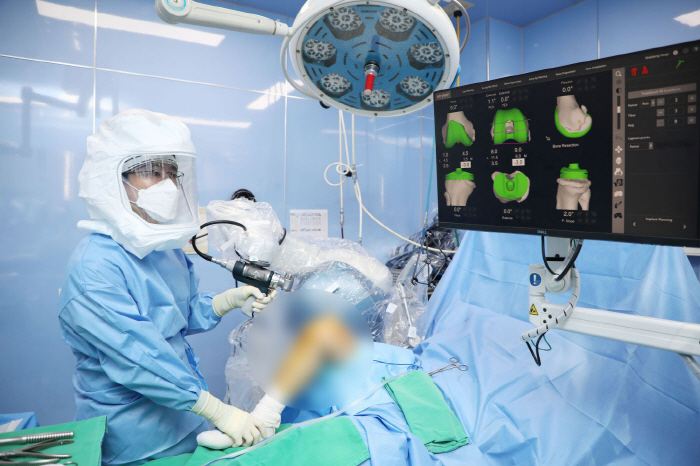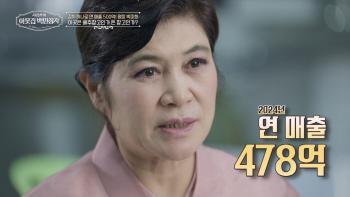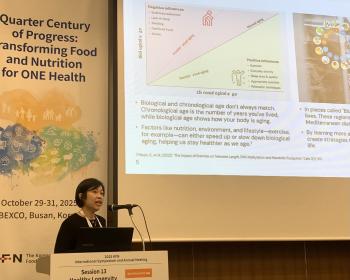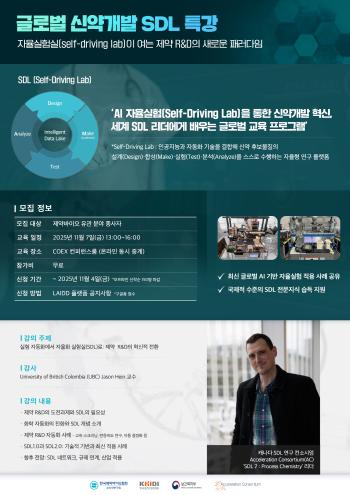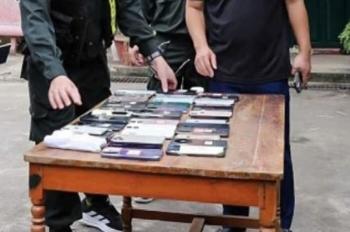Cause of knee artificial joint reoperation?Infections are the most common for total replacement surgery at Himchan Hospital, and Harry is the most common for partial replacement surgery
Jun 04, 2025
According to an analysis of the main causes of knee artificial joint reoperation by Himchan Hospital, artificial joint infection accounts for the largest portion of total replacement surgery and artificial joint dissociation accounts for the largest portion of partial replacement surgery.
Knee artificial joint surgery is an operation in which all cartilage is worn out due to degenerative changes, causing inflammation by hitting joint bones, and replacing all or part of the joint with artificial joints for terminal knee arthritis patients with severe pain and deformed legs. If the entire knee joint is replaced, it is called total replacement, and if only the damaged inner part is replaced, it is called partial replacement.
According to recent research data, the lifespan of artificial joints is known to be more than 25 years for total replacement and 20 years for partial replacement, but reoperation may be required earlier than expected due to various causes. Of the 48,000 total knee arthroplasty cases performed by Himchan Hospital for 19 years from 2006 to 2024, 530 (1.1%) reoperation cases and 279 (15.5%) reoperation cases of total knee arthroplasty were analyzed.
As a result, artificial joint infections were the highest in 212 cases (40.0%) as the cause of reoperation by patients with total knee arthroplasty. If the tissue around the artificial joint is infected, inflammation occurs, and it leads to decreased joint function and sepsis along with pain, which requires reoperation. Artificial joint dissociation followed with 191 cases (36.0%), and artificial joint dissociation is a phenomenon in which artificial joints fall from bones or become loose, causing extreme pain, loss of function, joint instability, and bone damage, so it also needs to be re-opened. In addition, 82 cases of abrasion and fractures (15.5%) of artificial joint liners that act as cartilage, 30 cases of artificial joint instability (5.7%), 10 cases of artificial joint misalignment (1.9%), 3 cases of fractures (0.6%) around artificial joints, and 2 other cases (0.4%) were found in order.
Partial artificial joint dissociation accounted for the highest proportion with 126 cases (45.2%) as the biggest cause of reoperation with total replacement surgery after partial replacement surgery. Subsequently, 103 cases (36.9%) of partial artificial joint liner wear and dislocation, 22 cases (7.9%) of partial artificial joint instability, 14 cases of degenerative arthritis (5.0%), 8 cases (2.9%) of partial artificial joint infection, and 6 other cases (2.2%) followed.
Baek Ji-hoon, head of the Joint Clinic at Himchan Hospital (Orthopedic Surgeon), said "Artificial joint infections, which appear as the biggest cause of reoperation, can be caused by various factors such as decreased immunity, obesity, and smoking in addition to direct bacterial infections."He stressed that health care to strengthen immunity is very important as it is known that once infected, the probability of being infected again after reoperation is three to five times higher than that of the first operation.
When an artificial joint infection occurs, the knee is swollen and fever appears along with extreme pain. Treatment may be possible with antibiotic administration within the first 72 hours of infection. However, if the time is delayed after infection, bacteria form a film on the artificial joint structure, making it difficult to treat, so after removing the existing artificial joint, the inflammation around it should be completely removed and re-surgery after antibiotic treatment.
Artificial joint dissociation is characterized by severe pain when moving, although you may not feel much pain when you stay still because the bones and artificial joints are physically separated. As time goes by, the bone melts more and collapses, so you should consider reoperation as soon as Harry is found.
Artificial joint reoperation is much more complicated and difficult than the first surgery because it requires removal of existing artificial joints, and there is already bone damage or deformation, or it may be difficult to grasp the anatomical structure due to adherence to surrounding tissue. In addition, elderly patients are often accompanied by underlying diseases such as high blood pressure and diabetes, which further increases the difficulty of surgery. In recent years, artificial joint reoperation using robot systems has attracted attention to improve the accuracy and safety of surgery and for more sophisticated surgery. The robotic system has the advantage of being able to more accurately balance and align the left and right sides of the legs, which are particularly important in reoperation.
Director Baek Ji-hoon "Artificial joint reoperation is more difficult than the first surgery as it is performed again in areas where surgery has already been performed. In addition, since the approach varies depending on the cause of the reoperation and the individual condition of the patient, accurate diagnosis and customized treatment plan for each case are essential, so the rich clinical experience and proficiency of the surgeon are very important."
Knee artificial joint surgery is an operation in which all cartilage is worn out due to degenerative changes, causing inflammation by hitting joint bones, and replacing all or part of the joint with artificial joints for terminal knee arthritis patients with severe pain and deformed legs. If the entire knee joint is replaced, it is called total replacement, and if only the damaged inner part is replaced, it is called partial replacement.
According to recent research data, the lifespan of artificial joints is known to be more than 25 years for total replacement and 20 years for partial replacement, but reoperation may be required earlier than expected due to various causes. Of the 48,000 total knee arthroplasty cases performed by Himchan Hospital for 19 years from 2006 to 2024, 530 (1.1%) reoperation cases and 279 (15.5%) reoperation cases of total knee arthroplasty were analyzed.
As a result, artificial joint infections were the highest in 212 cases (40.0%) as the cause of reoperation by patients with total knee arthroplasty. If the tissue around the artificial joint is infected, inflammation occurs, and it leads to decreased joint function and sepsis along with pain, which requires reoperation. Artificial joint dissociation followed with 191 cases (36.0%), and artificial joint dissociation is a phenomenon in which artificial joints fall from bones or become loose, causing extreme pain, loss of function, joint instability, and bone damage, so it also needs to be re-opened. In addition, 82 cases of abrasion and fractures (15.5%) of artificial joint liners that act as cartilage, 30 cases of artificial joint instability (5.7%), 10 cases of artificial joint misalignment (1.9%), 3 cases of fractures (0.6%) around artificial joints, and 2 other cases (0.4%) were found in order.
Partial artificial joint dissociation accounted for the highest proportion with 126 cases (45.2%) as the biggest cause of reoperation with total replacement surgery after partial replacement surgery. Subsequently, 103 cases (36.9%) of partial artificial joint liner wear and dislocation, 22 cases (7.9%) of partial artificial joint instability, 14 cases of degenerative arthritis (5.0%), 8 cases (2.9%) of partial artificial joint infection, and 6 other cases (2.2%) followed.
Baek Ji-hoon, head of the Joint Clinic at Himchan Hospital (Orthopedic Surgeon), said "Artificial joint infections, which appear as the biggest cause of reoperation, can be caused by various factors such as decreased immunity, obesity, and smoking in addition to direct bacterial infections."He stressed that health care to strengthen immunity is very important as it is known that once infected, the probability of being infected again after reoperation is three to five times higher than that of the first operation.
When an artificial joint infection occurs, the knee is swollen and fever appears along with extreme pain. Treatment may be possible with antibiotic administration within the first 72 hours of infection. However, if the time is delayed after infection, bacteria form a film on the artificial joint structure, making it difficult to treat, so after removing the existing artificial joint, the inflammation around it should be completely removed and re-surgery after antibiotic treatment.
Artificial joint dissociation is characterized by severe pain when moving, although you may not feel much pain when you stay still because the bones and artificial joints are physically separated. As time goes by, the bone melts more and collapses, so you should consider reoperation as soon as Harry is found.
Artificial joint reoperation is much more complicated and difficult than the first surgery because it requires removal of existing artificial joints, and there is already bone damage or deformation, or it may be difficult to grasp the anatomical structure due to adherence to surrounding tissue. In addition, elderly patients are often accompanied by underlying diseases such as high blood pressure and diabetes, which further increases the difficulty of surgery. In recent years, artificial joint reoperation using robot systems has attracted attention to improve the accuracy and safety of surgery and for more sophisticated surgery. The robotic system has the advantage of being able to more accurately balance and align the left and right sides of the legs, which are particularly important in reoperation.
Director Baek Ji-hoon "Artificial joint reoperation is more difficult than the first surgery as it is performed again in areas where surgery has already been performed. In addition, since the approach varies depending on the cause of the reoperation and the individual condition of the patient, accurate diagnosis and customized treatment plan for each case are essential, so the rich clinical experience and proficiency of the surgeon are very important."
|
This article was translated by Naver AI translator.
